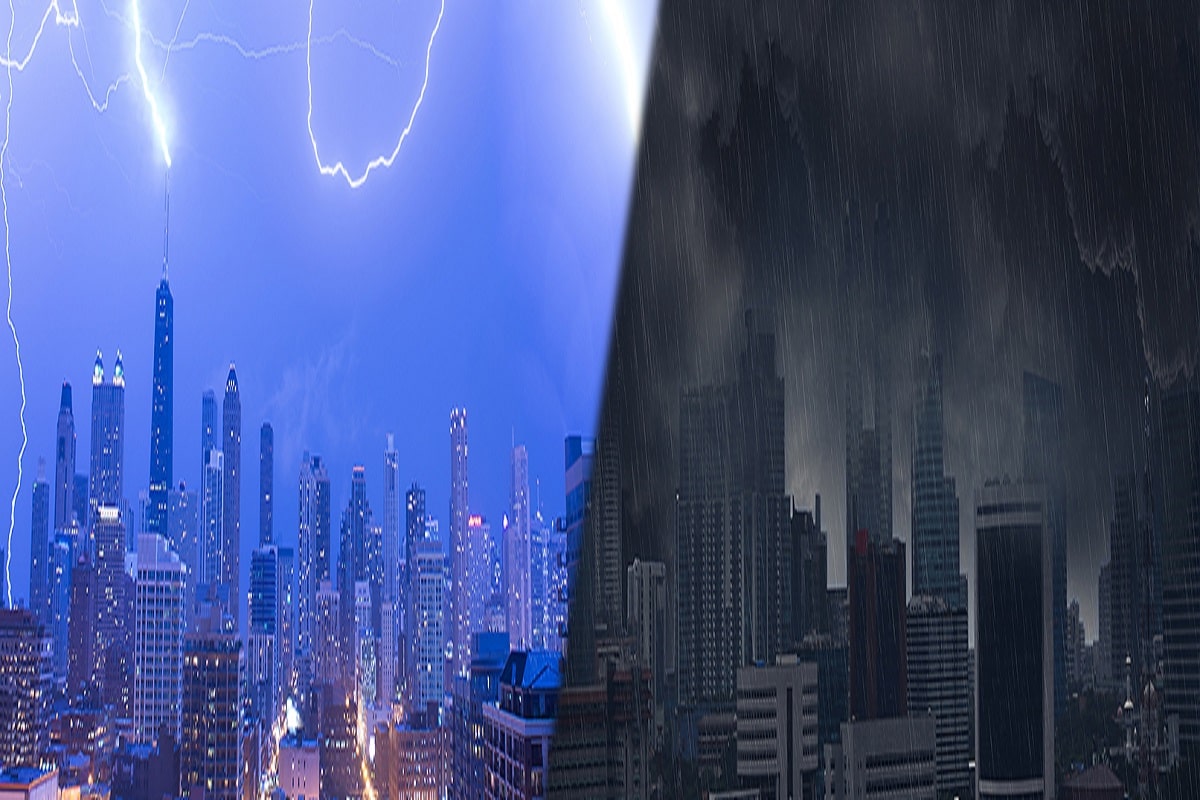Extreme weather events have increased significantly in the last several years. What might not have been a concern in a given geographic area 20 years ago (from severe storms to flooding) could suddenly be an issue. And when it comes to elevators, severe weather can be catastrophic. Fortunately, there are things you can do to protect your elevator systems and lessen liability.
First, check your elevator warranty, maintenance and insurance contracts
Keep in mind that many extreme weather events are not always covered in your elevator warranty or even elevator maintenance contracts. In fact, your insurance may not even cover damage in the event of hurricanes, flooding and other events. If necessary, consider extended coverage, or at the very least, know the ins and outs of your contracts so you’ll be prepared.
Prepare your elevator for severe thunderstorms
These days, we usually have fair warning about large storms, but sometimes, lightning strikes (literally) suddenly. That’s why It’s crucial to prepare ahead of time by checking any areas that may be vulnerable to water penetration and protecting your system from power outages.
Some precautions are meant to be taken well ahead of time, while others can happen as storms approach.
To be proactive:
- During routine maintenance, check to make sure vents are working properly but won’t allow water or moisture to blow or trickle in during storms. You can even install splash guards near vents to prevent water leakage and damage.
- Check weather stripping and caulking for all elements, including the machine room.
- Check gutters and roof areas of the building that could be vulnerable to wind and water and allow water to enter the elevator shaft.
- Be sure that your elevator has surge protection and anti-entrapment systems installed and in working order. The latter will keep passengers from being trapped during sudden power outages, and the former will prevent the need for costly and time-consuming repairs by protecting electronic elevator components in the event of lightning strikes.
When a storm is approaching, your level of preparation will depend on the severity. At the very least, you may want to temporarily cover vents and openings with plywood just before the storm to prevent leakage. Even if you don’t shut down all elevators (see tips for that below), you can take extra precautions to protect elevator machine rooms, including boarding windows/doors and using sandbags.
How to prepare your elevator for hurricanes
Hurricane season in the U.S. generally begins in June and ends at the end of November. Facilities managers should take many of the same proactive precautions to prepare for hurricanes as they do for severe thunderstorms. But because hurricanes come with much stronger winds, extra protection may be necessary.
Before hurricane season, run through the following checklist:
- Refer to the storm checklist above
- Additionally, make sure all components of the elevator system that could be exposed to high winds (doors, for instance) are strong and in good working order.
When a hurricane is approaching:
- You can protect the equipment in your elevator machine room from strong winds by using plywood against the vents and windows until the storm passes.
- Similarly, close and cover all vents and openings in the elevator and hoistway itself; but be careful not to do this too far in advance when it comes to the elevator machinery—as it can easily overheat.
- Do not allow elevators to run during hurricanes. Park the elevator cars strategically depending on the building: enclosed-building elevators should be at the center of the building or the top floor for buildings with only two floors; for elevators exposed to the outdoors, park cars on the second to highest floor. After cars are parked, shut down the elevator and cut the power to the system.
Protect your elevator during a flood
Flooding is a risk in both severe storms and hurricanes. Go through the checklists above to minimize the chance of flooding and water damage. Additionally:
- Check building sump pumps and related alarms, especially those that could cause flooding in elevator areas.
- Consider a float switch and/or liquid intrusion detection system. These devices force the elevator to higher floors in the event of sudden flooding (among other safety features) to prevent damage to the elevator.
- If flooding is imminent, shut elevators down and follow the steps for hurricane preparedness, above. Also, consider sandbags around the machine room and any outdoor-exposed elevators.
Prepare your elevator for an earthquake
Unlike storms, earthquakes are much less predictable. And the thought of being in an elevator during a large earthquake can be terrifying. Fortunately, a dose of prevention goes a long way. Making buildings themselves earthquake-proof is obviously the most crucial, but there are preventative measures for elevator systems, too.
Elevators in high-risk areas should have higher standards—heavier-duty guide rail mounting and more sophisticated rope tensioning systems, for example.
Finally, sophisticated sensor technology is helping facilities managers detect and report seismic activity while filtering out nuisance vibrations. These systems can even trigger communication with the controller and email alerts to key staff.
Checking your elevator after a major weather event or earthquake
Checking your elevator systems after a severe storm or earthquake is just as important as preparing beforehand. This is because the longer you wait to check and remedy a situation (like flooding for example), the more damage can be done to the system. What’s more, hidden damage can cause major issues in the future if not remedied.
Be sure to check the elevator machine room and electrical equipment; then move to the hoistways and pits. If you notice water or other damage (from wind or seismic activity), do not put the elevators in service until a technician has inspected and repaired the system as necessary.
As with most elevator safety issues, prevention is key. That means putting the proper technologies and components in place to ensure your elevators are properly prepared for the environmental risks within your geographic area.
Thorough maintenance is also key. Use this elevator maintenance guide to ensure your process is up to snuff (you can also find escalator maintenance tips here).
For tips and advice related to preventative systems and components, get in touch with Adams today or shop our online store.



















